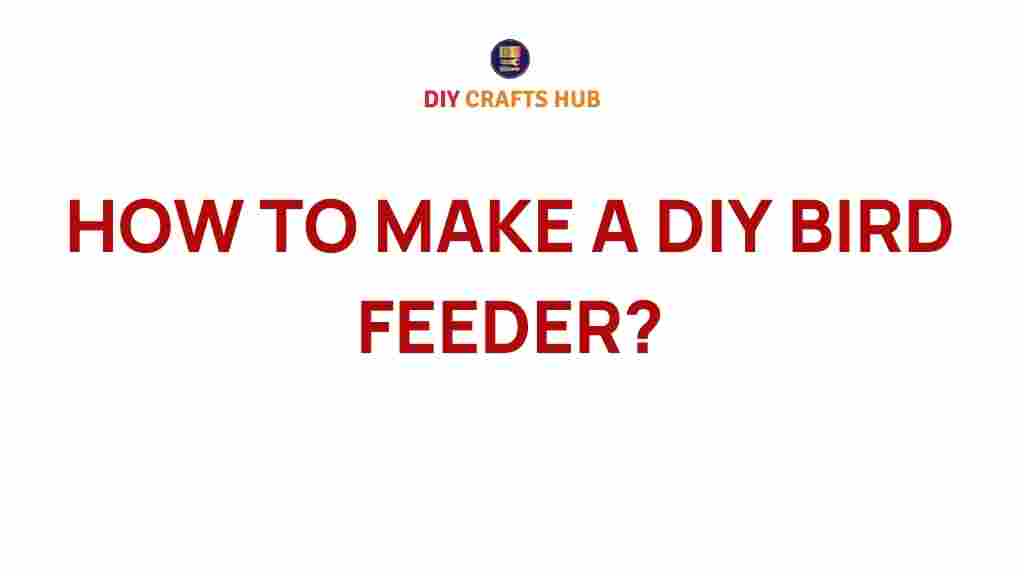How to Make a DIY Bird Feeder
Are you looking for a creative way to enjoy nature from the comfort of your home? Making a DIY bird feeder is a fantastic way to invite beautiful feathered friends into your garden or backyard. It’s a fun and simple project that can bring endless joy to bird lovers of all ages.
In this guide, we’ll walk you through the materials, steps, and tips needed to create your very own DIY bird feeder. Whether you’re a seasoned crafter or a beginner, this project is accessible to everyone. Let’s dive in!
Why Make a DIY Bird Feeder?
Building a DIY bird feeder has multiple benefits:
- Connect with nature: Watching birds feed is a relaxing and rewarding experience.
- Eco-friendly: Repurpose materials like plastic bottles or scrap wood for a sustainable project.
- Fun for all ages: It’s a great way to bond with family or teach kids about wildlife.
- Cost-effective: Save money by creating a bird feeder instead of buying one.
Materials You’ll Need
Before you start, gather the following materials based on the type of bird feeder you want to create. Here are a few options:
- Empty plastic bottle
- Wooden board or scrap wood
- Twine or string
- Drill and screws (for wooden feeders)
- Paint and non-toxic sealant (optional)
- Birdseed mix
Step-by-Step Guide to Making Your DIY Bird Feeder
1. Choose Your Design
Decide on the type of bird feeder that suits your space and style. Here are some ideas:
- Plastic Bottle Feeder: Use a recycled plastic bottle for a simple hanging feeder.
- Wooden Platform Feeder: Create a sturdy feeder with a rustic charm using wood scraps.
- Teacup Feeder: Repurpose an old teacup and saucer for a unique look.
2. Assemble Your Tools
Make sure you have all the tools needed to assemble your bird feeder. Common tools include scissors, a drill, a hammer, and a measuring tape. Having everything ready will make the process smoother.
3. Build Your Bird Feeder
Follow these steps for a basic plastic bottle feeder:
- Clean the plastic bottle thoroughly and remove any labels.
- Cut small holes near the bottom of the bottle for birds to access the seeds.
- Poke two holes near the top and thread string or twine through to create a hanging loop.
- Fill the bottle with birdseed and securely cap it.
- Hang it in a location that’s safe from predators but easily visible for birds.
4. Add a Personal Touch
If you’d like, you can decorate your feeder with paint or natural materials. Make sure to use non-toxic products that won’t harm the birds.
Placement Tips for Your DIY Bird Feeder
Choosing the right spot for your bird feeder is crucial for attracting birds:
- Place it in a shaded area to keep the seeds fresh.
- Ensure it’s away from heavy foot traffic to avoid scaring birds.
- Hang it at least five feet above the ground to deter predators like cats.
- Keep it visible from a window for easy birdwatching.
Troubleshooting Common Issues
Here are some tips to address common problems with your DIY bird feeder:
- No birds are coming: Be patient; it can take time for birds to discover a new feeder. Try adding water sources nearby or using a different seed mix.
- Pests like squirrels: Use baffles or hang your feeder on a metal pole to keep pests away.
- Seed clumps or molds: Clean the feeder regularly and replace seeds if they get wet.
Enjoy Your Birdwatching Adventure
Once your DIY bird feeder is in place, take some time to sit back and enjoy the sight of your new visitors. You can even keep a journal to document the different species that stop by. For more birdwatching tips, check out our birdwatching guide.
Learn More About Bird Feeding
If you’re interested in deepening your knowledge about bird feeding and habitat creation, explore resources from organizations like the National Audubon Society. They provide valuable information on supporting bird populations in your area.
Conclusion
Creating a DIY bird feeder is a simple yet impactful way to invite nature into your life. With a little effort and creativity, you can build a feeder that not only helps local birds but also enhances your connection with the natural world.
So why wait? Gather your materials, follow this guide, and start your journey into the delightful world of birdwatching today!
This article is in the category Creative Upcycling and created by DIYCraft Team
